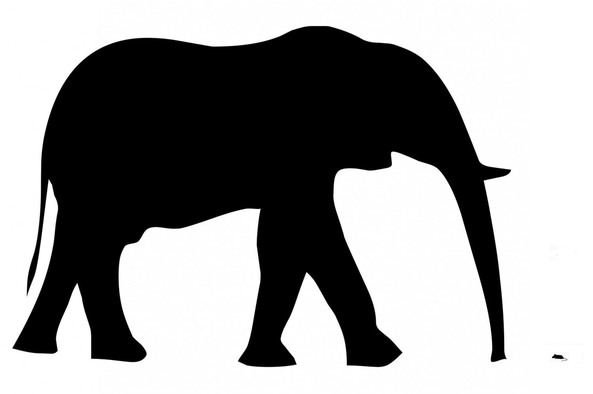|
The physical abilities of fleas are often compared with those of humans to highlight how remarkable these insects are. For example, a website took the record distance jumped by a flea which is 13 inches and reasoned that since a flea is 1/8 inch in length that means this flea jumped 110 times its length. The claim was then made that if a 5 foot tall human being were to try to equal this feat, such person would have to jump 550 feet, which is nearly the length of 2 football fields!  The above type of reasoning is probably to be expected when most people (including yours truly) have grown up reading books and watching movies where people, animals, or insects are resized by some fiat to very small or very large body dimensions. Just to name a few: Ant Man, Honey I shrunk the Kids, Them!, Fantastic Voyage, and the inhabitants of the nations of Lilliput and Brobdingnag in Gulliver’s Travels. The truth is that using this form of linear thinking when extrapolating from one body size to another is comparing apples to oranges. The mechanical strength of body structures and the physiology and biochemistry that living things rely on to move and survive at a certain body size are very different from those of living things that have vastly different body sizes. A 200 pound human needs to have a certain bone structure as well as the muscles to go along with it to be able to support such large weight. By comparison, a flea weighs 0.0000022 pounds and has a body designed to support this tiny weight. This is part of the reason why it can make those seemingly amazing jumps. A 200 pound flea would collapse and die unable to support its body weight and unable to breathe. If it could muster the strength to jump with a force proportional to when its size was small, it would tear itself to pieces. On the other hand, a human being the size of a flea would lose heat so fast that it would die from hypothermia if other problems don’t kill it first. A viable human the size of a flea would not look like a human being anymore, but it would probably be able to compete with fleas in several feats of strength. The above is not merely a curiosity. Scaling body sizes is an important and very complex discipline in pharmacology. For example, if the only information available regarding the dose of a drug to be administered comes from experiments performed with small animals, then based on that information what should be the starting dose to be administered to humans in a clinical trial? Or if the only information regarding dose comes from adults, what should be the starting dose to be administered to infants? The answer has to take into account several physical and biochemical parameters and is seldom straightforward. However, the linear thinking involved in the scaling of the flea to the human is out of the question. An example with tragic consequences of this thinking involved the sad case of Tusko the elephant. Tusko was an Asian elephant at the Lincoln Park Zoo in Oklahoma City. In 1962 researchers decided to administer LSD to this elephant to see if they could reproduce a physiological state related to rutting that makes male elephants very aggressive. To calculate the dose they used a reference dose employed in a cat and extrapolated it linearly on a milligram per kilogram basis to the weight of the elephant. When the elephant was administered the drug, it went into convulsions and died. The issue that the researchers did not recognize is that one pound of cat has a much higher metabolism than one pound of elephant. When metabolic rate is taken into account it can be worked out that this poor elephant received a dose that was ten times higher than the effective dose on cats! Issues of scaling do not pertain only to biological systems. For example, a chemist may use a certain synthetic procedure in the laboratory to make small amounts of a chemical to be used in research. However, if large quantities of this chemical are required, scaling up the procedure in an industrial setting is a very complex issue, especially if the procedure involves reactions that generate heat. In a previous post I mentioned how the large volume of an elephant related to its surface area causes heat to exit its body very slowly, whereas the opposite occurs in a mouse. Similarly the flow of heat out of a small reaction vessel in a research lab is much faster compared to that which takes place in the large volume of an industrial reactor. If heat production and flow in an industrial reactor are not controlled, something called a “runaway reaction” can occur which generates heat faster than can be removed. The buildup of heat from a runaway reaction can lead to explosions and fires like the one that happened at the Morton International plant in Paterson, New Jersey, in 1998. So by all means admire the feats of strength of tiny living things, and enjoy the next movie where some oversized critter terrorizes the city, but remember that in reality what works for the small will not work for the large and vice versa.
0 Comments
Your comment will be posted after it is approved.
Leave a Reply. |
Details
Categories
All
Archives
June 2024
|
 RSS Feed
RSS Feed